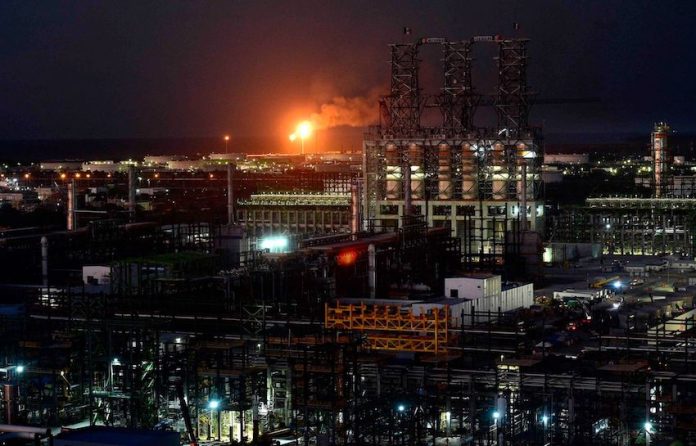State oil company Pemex has not only continued, but increased gas flaring at the Ixachi field in Veracruz, despite promising to stop the environmentally harmful practice in November 2022.
Flaring at the Papan and Perdiz processing plants increased from 1 billion cubic feet at the time of Pemex’s pledge, to 1.3 billion cubic feet in January, according to satellite data analyzed by Reuters.
Flaring – which involves burning off gas from oil production instead of processing it – emits harmful greenhouse gases and wastes a potentially lucrative natural resource.
When Reuters visited the site in mid-February, they found four huge flares burning. Five local residents said the flares were lit almost constantly, and satellite images indicated the flares were still active last week.
Neither Pemex nor government energy authorities agreed to Reuters’ requests for comment.
Pemex has come under sustained pressure from Mexico’s National Hydrocarbons Commission, environmentalists and the United States government to stop this practice. The company has promised several times to bring down flaring rates, acknowledging that its poor environmental record is making it harder to access financing.
On Nov. 18, Pemex CEO Octavio Romero released a video pledging to start processing 300 million cubic feet of gas per day from Ixachi and to stop flaring at the site by Jan. 15.
However, multiple sources at Pemex and Mexico’s energy authorities told Reuters this promise was unrealistic. Pemex is the world’s most indebted major oil producer and lacks the capacity to develop the infrastructure to process such huge quantities of gas.
Senior company sources told Reuters that Pemex would rather pay fines than deal with the gas flaring problem, as it instead prefers to direct its resources towards producing condensate – a form of light crude oil.
The company is currently struggling to increase oil production to 2 million barrels a day – a 12% increase from current levels – a key pledge in President López Obrador’s nationalistic energy policy.
In December, Pemex released an updated business plan for 2023-2027, which again promised to reduce emissions but also set higher targets for increasing oil and gas production.
Besides exacerbating its already poor environmental record, Pemex’s battle to reach official targets may be putting safety at risk. Last week, three separate fires broke out at Pemex facilities on the same day, prompting renewed scrutiny of its safety record.
With reports from Reuters
